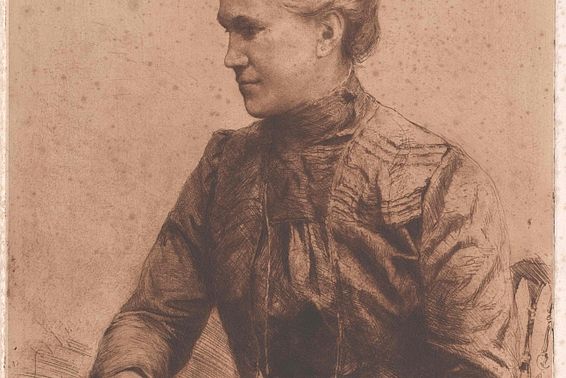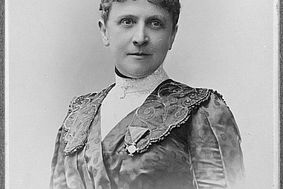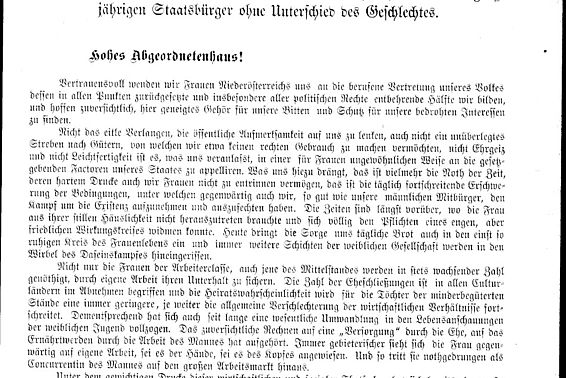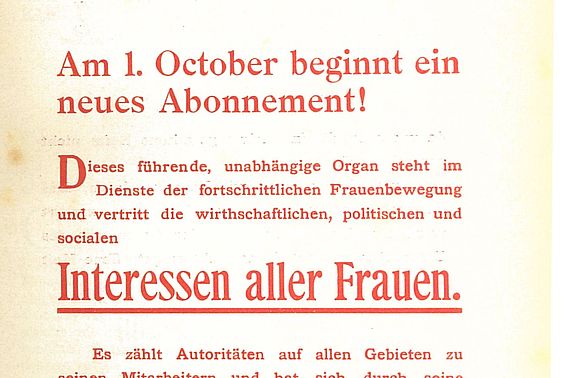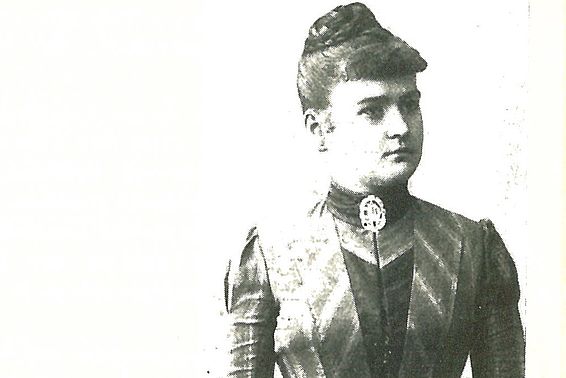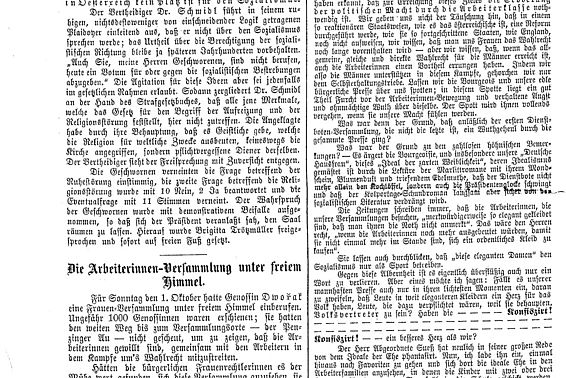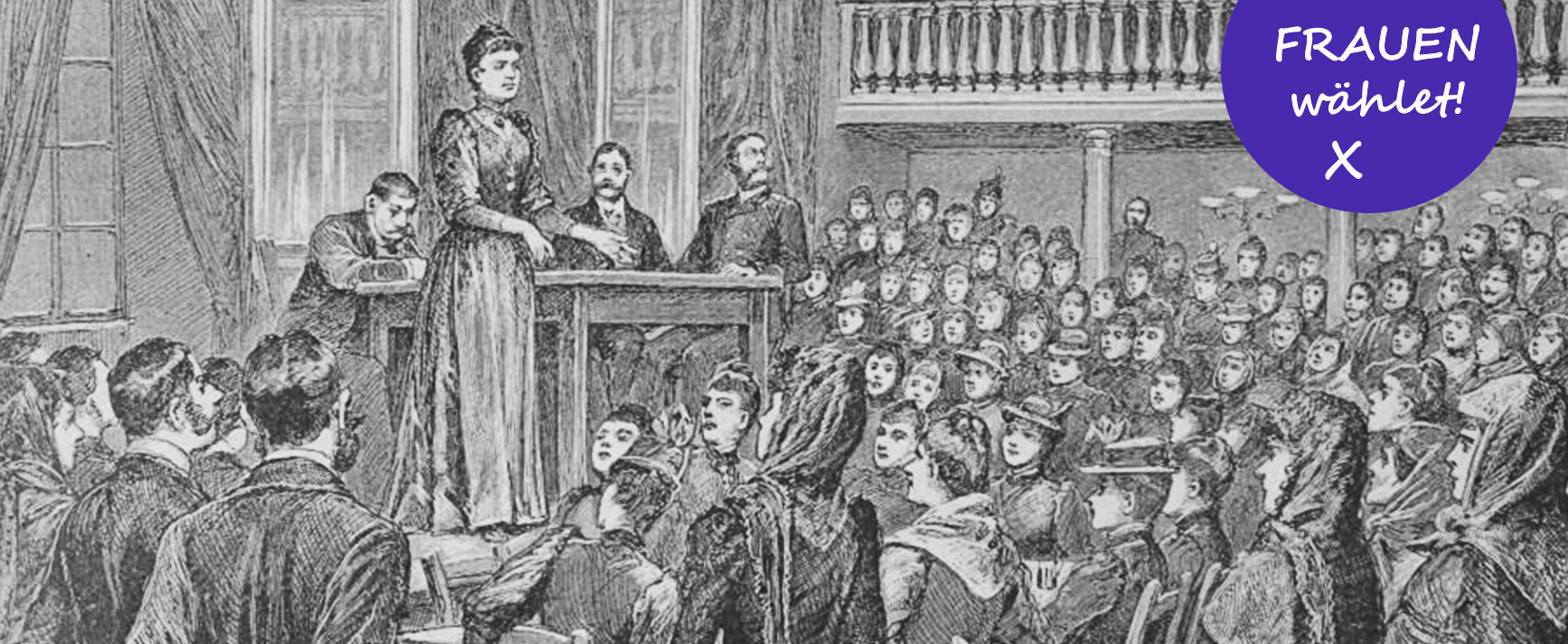
Women organise – 1890s
A women’s suffrage movement was formed towards the end of the 19th century. In 1889 female taxpayers in Lower Austria had their right to vote for the diets of the crownlands withdrawn. This was followed by a debate on whether these women should also be denied the right to vote in municipal elections. Although this did not happen, it was the trigger for women to organise. A number of teachers mobilised for their political rights – such as the right to vote » Auguste Fickert and » Marie Schwarz set up a “Committee on issues of women’s suffrage“.
These liberal women began making their voices heard through signed petitions to the Parliament. Contacts were important with deputies who advocated women’s suffrage and introduced the petitions of the women’s movement into the House of Deputies. Another way of reaching the public with their concerns was to publish women’s newspapers, articles and brochures. This was the background against which the » General Austrian Women’s Association was born in 1893, among others.
In contrast, the » Social Democratic Women’s Movement was always linked to its party organisation. Demonstrations and marches were its focus. By 1893 female Social Democrats were already demanding the right to vote at a meeting in the Penzinger Au. Although the demand for universal, equal, direct suffrage without gender discrimination had been included in the Austrian Social Democratic Workers’ Party manifesto in 1892, it often had little support from the male members.
In 1896 a general group of voters – called a curia – was introduced in which all economically independent male citizens were eligible to vote for the parlaiment. The demands by women in the liberal class and the proletariat for access to the parliamentary elections fell on deaf ears.

